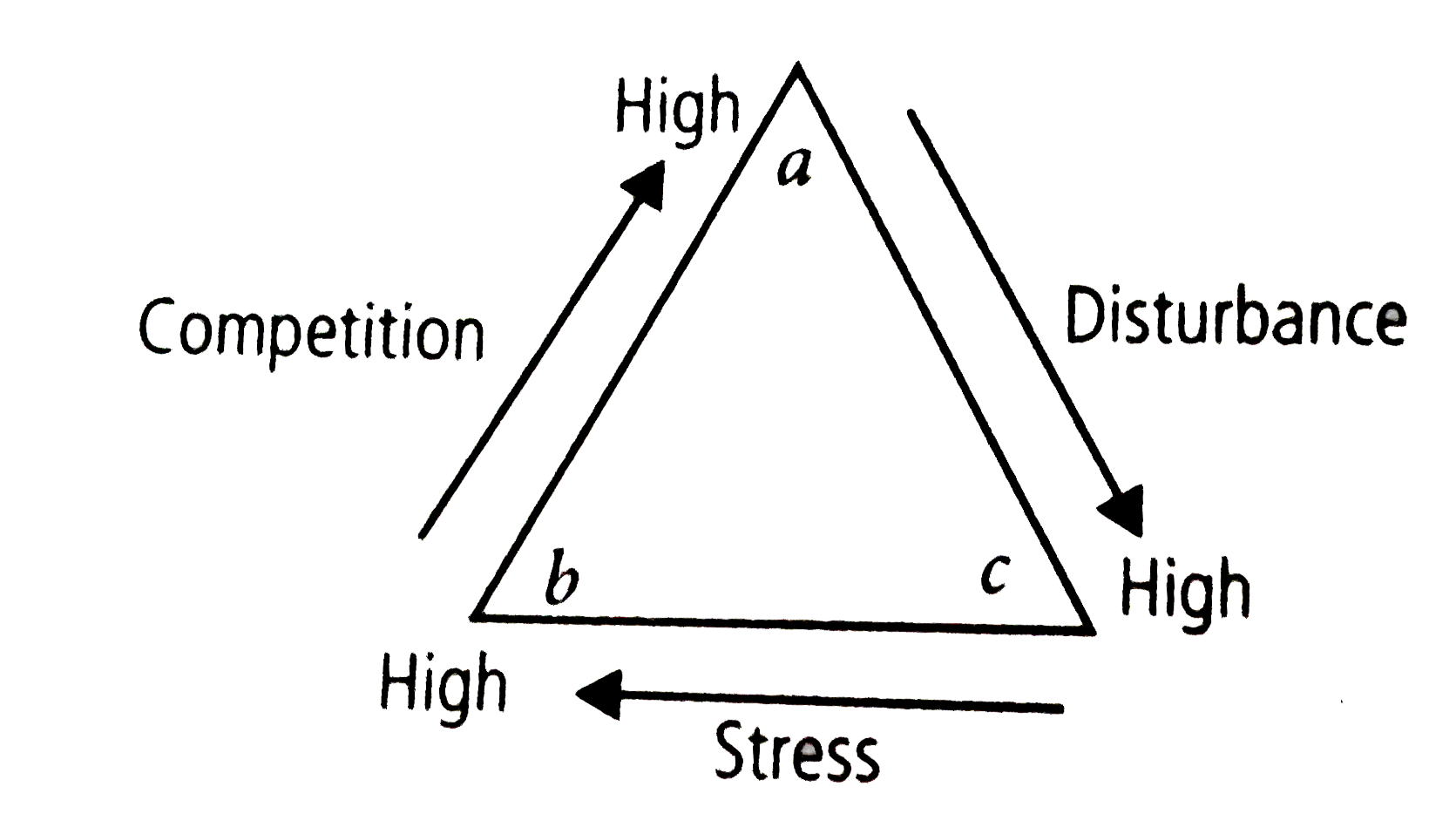If the carbon atoms fixed by producers already have passed through three species, the trophic level of the last species would be
scavenger
tertiary producer
tertiary consumer
secondary consumer.
The correct Answer is:C
To determine the trophic level of the last species that the carbon atoms have passed through, we can follow these steps:
1. Identify the Trophic Levels:
- The first trophic level is occupied by producers (e.g., plants, phytoplankton).
- The second trophic level is occupied by primary consumers (herbivores that eat producers).
- The third trophic level is occupied by secondary consumers (carnivores that eat primary consumers).
- The fourth trophic level is occupied by tertiary consumers (carnivores that eat secondary consumers).
2. Analyze the Question:
- The question states that the carbon atoms fixed by producers have passed through three species. This means they have moved through three different trophic levels.
3. Determine the Last Species:
- If the carbon has passed through three species, we can count:
- The first species (1st trophic level) is the producer.
- The second species (2nd trophic level) is the primary consumer.
- The third species (3rd trophic level) is the secondary consumer.
- Therefore, the last species, which is the one that has consumed the carbon atoms after passing through three species, would be the tertiary consumer (4th trophic level).
4. Conclusion:
- The trophic level of the last species is the tertiary consumer.
Final Answer:
The trophic level of the last species would be tertiary consumer.
---
- The first trophic level is occupied by producers (e.g., plants, phytoplankton).
- The second trophic level is occupied by primary consumers (herbivores that eat producers).
- The third trophic level is occupied by secondary consumers (carnivores that eat primary consumers).
- The fourth trophic level is occupied by tertiary consumers (carnivores that eat secondary consumers).
- The question states that the carbon atoms fixed by producers have passed through three species. This means they have moved through three different trophic levels.
- If the carbon has passed through three species, we can count:
- The first species (1st trophic level) is the producer.
- The second species (2nd trophic level) is the primary consumer.
- The third species (3rd trophic level) is the secondary consumer.
- Therefore, the last species, which is the one that has consumed the carbon atoms after passing through three species, would be the tertiary consumer (4th trophic level).
- The trophic level of the last species is the tertiary consumer.
The trophic level of the last species would be tertiary consumer.
Topper's Solved these Questions
- ECOSYSTEMBook:NCERT FINGERTPS ENGLISHChapter:ECOSYSTEMExercise:Ecosystem
Explore 140 Videos
- BIOTECHNOLOGY AND ITS APPLICATIONBook:NCERT FINGERTPS ENGLISHChapter:BIOTECHNOLOGY AND ITS APPLICATIONExercise:Biotechnology And Its Application
Explore 137 Videos
- ENVIRONMENTAL ISSUESBook:NCERT FINGERTPS ENGLISHChapter:ENVIRONMENTAL ISSUESExercise:Environmental Issues
Explore 142 Videos
Similar Questions
An organism contains carbon molecules which have passed through three levels of ecosystem. The organism is
View SolutionA uniform disc is rotating at a constantt speed in a vertical plane about a fixed horizontal axis passing through the centre of the disc. A piece of the disc from its rim detaches itself from the disc at the instant when it is at horizontal level with the centre of the disc and moving upward. Then about the fixed axis, the angular speed of the
View Solution
Knowledge Check
The figure below depicts life-histroy strategies for three plant species (a,b and c) along 3 axes : strength of competition with other organisms, level of distrubance in the habitat, and level of environmental stress in the habitat. Species a grows in habitats where competition among species b grown in habitats with and stress are low. Species b grows in habitats with high environmental stress but with low interspecies competition. Species c grows in highly disturbed habitats with low enviornmental stress.
 Which of the statements below is/are correct ?
Which of the statements below is/are correct ?
I. Characteristics of "a-type" plants are faster growth rate and short-lived leaves.
II. Desert annual plants are "b-type" species. they have rapid growth and produce large amount of seeds in a short time after rains.
III. Most plants belonging to "c-type" species would be herbaceous while "a-type" and "b-types" species are likely to be trees or shrubs.AOnly IIBI and IICI and IIIDII and III
Ethanol is commercially produced through a particular species of:-
View SolutionIn a solid AB, A atoms have a ccp arrangement and B atoms occupy all the octahedral sites. If all the face-centred atoms along one of the axes passing through body centres are removed, then what will be the resultant stoichiometry of compound ?
View SolutionA coil having N turns is would tightly in the form of a spiral with inner and outer radii a and b respectively. When a current I passes through the coil, the magnetic field at the centre is.
View Solution"in a food - chain , a trophic level represents afunctional level , not a species ' explain .
View SolutionUnpolarised light of intensity 32Wm−2 passes through three polarisers such that the transmission axis of the last polariser is crossed with first. If the intensity of the emerging light is 3Wm−2, the angle between the axes of the first two polarisers is
View SolutionAn unpolarised light of intensity 64 Wm^(-2) passes through three polarisers such that the transmission axis of the last polariser is normal to first. If the intensity of emerging light is 6 Wm(-2),then angle between first two polariser may be
View SolutionExplain , giving three reasons, why tropics show greatest levels of species diversity.
View Solution

